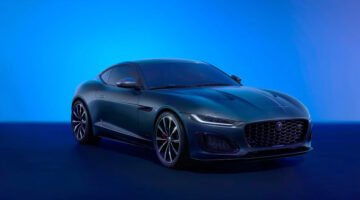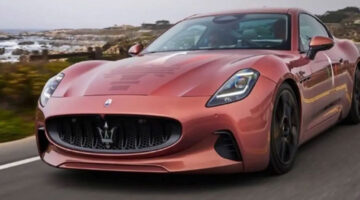Jaguar’s electric revolution has arrived. 18 months after the I-Pace Conceptdebuted at the 2016 LA motor show the production version has now been revealed, and the good news is if you liked the concept, you’ll love the road car. This is not just a big deal for Jaguar and its diesel-centric lineup, but a big deal for the industry as it heralds the first major car brand’s answer to the Tesla Model S.
The Range given is 479 kilometres based on the latest WLTP testing procedure, right on what Telsa quote for its Model S 75D, although the Tesla’s figures are not directly comparable as they don’t yet conform to the WLTP. Recharge times are dependant on the capacity of the charge point, but Jaguar says that the batteries will recharge from zero to 80 per cent in 85 minutes from a 50kW point with the ability to support rapid charge 100kW points in future.

What makes the I-Pace such a significant step for Jaguar is that it’s not simply an electrified version of an existing model, but rather a ground-up engineering project. One of the benefits of designing an electric car from scratch is the ability to implement a skateboard-style chassis, a packaging development bespoke to battery-electric vehicles. Due to the lack of an I.C engine, the I-Pace offers F-Pacelevels of interior space, but on a footprint only slightly larger than an XE. The low centre of gravity should help the handling balance and performance is likely to be spritely beyond its numbers thanks to the instant torque characteristic of electric motors.
The I-Pace has reached production with its concept car looks intact, too. Flush door handles, crisp lighting units and optional 22-inch wheels certainly give the car a distinctive look. Jaguar’s design language has been carried over to a very different set of proportions, while the low-set bodywork split is a clever reference to the bespoke chassis that underpins the I-Pace. Inside the cabin, Jaguar will utilise its version of the Touch Duo Pro infotainment system also seen in the Range Rover Velar, although the lower screen appears to do without the clever overlapping rotary dials. Otherwise the interior is recognisably Jaguar, but with an added sense of airiness compared to some of the disappointing interiors from the British marque in recent years. The Velar’s premium fabric finish is also available for those who think leather is a bit anti-PC. Why is an all-electric SUV on c&p in the first place? Like them or loathe them, changing legislation and the drive towards electrification will make cars like this a mainstream eventuality – and hard to avoid. This is the first attempt by a mainstream premium manufacturer to crack Tesla’s electric vehicle domination, and while the I-Pace still has a way to go in convincing that this is the future, Jaguar might have made a very shrewd play by making sure it’s an early adopter, rather than its usual position of playing catch up to German rivals.

Below is a table of the Jaguar I-Pace’s specs against an equvilently priced Tesla Model S 75D
| Jaguar I-Pace | Tesla Model S 75D | |
| Battery Capacity | 90kWh | 75kWh |
| Range | 479 kms (WLTP) | 489 km (NEDC) |
| Power | 394bhp | 329bhp |
| Torque | 512lb ft | 387lb ft |
| 0-100kph | 4.8 secs | 4.4 secs |
| Top speed | 200kph (limited) | 225kph |
| Kerb weight | 2133kg | 2107kg |
| Base price | $87,320 | $88,975 |
The drag race: Jaguar I-Pace vs Tesla Model X 75D
As an element of the launch of the I-Pace, Jaguar decided to put the SUV EV against the Tesla Model X 75D over a 0-100-0kph acceleration and braking test. Predictably, the Jaguar overcame it’s larger American rival, accelerating faster and stopping within a shorter distance. Of course, this test has little relevance in the real world and the win still has a few caveats attached because Jaguar will have to work a little harder to beat a fully-loaded Tesla Model S or Model X P100D with the larger, more powerful motors and battery pack. Still, 0-100kph performance seems to be an important currency in electric car land and, if nothing else, this proves the new I-Pace is no pauper.
This article originally appeared at evo.co.uk
Copyright © evo UK, Dennis Publishing



